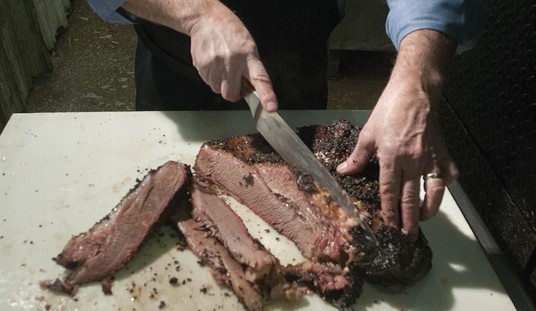One of my husband ‘s favorite sandwiches is peanut butter and a pickle on rye. Elvis Presley liked his peanut butter sandwiches with banana and bacon, and Hemingway liked thick onion slices in his. Ninety-four percent of American households have a jar on hand. The stuff lasts forever, so in a nuclear war situation you can always rely on it for sustenance. It can be stored safely unrefrigerated for two years.
I, on the other hand, have a love/hate relationship with it, and if I do ever eat it, I do so in the traditional manner, as a solo spread or with its mate, jelly! At other times, I abhor the stuff and, even when scrounging around for something to eat, will bypass it.
Who invented Peanut Butter?
I had always thought that peanut butter was as American as apple pie and mom and was never eaten before we Americans took over from the British. Not true. Peanut butter was actually an Aztec dish, but eaten as a paste, not a spread. I bet they didn’t eat it with jelly either, or put it into their kids’ lunch boxes.
The modern form of peanut butter was invented by Canadian Marcellus Gilmore Edson of Montreal. According to Wikipedia, he was the first to patent peanut butter, in 1884. Peanut flour already existed. His cooled product had “a consistency like that of butter, lard, or ointment,” according to his patent application. He included the mixing of sugar into the paste in order to harden its consistency.
Edson, a pharmacist, developed the idea of peanut paste as a tasty and nutritious staple for people who could hardly chew on solid food, which was not uncommon back then. Peanut paste, according to Wikipedia, was initially sold for six cents per pound.
His U.S. patent described “a process of milling roasted peanuts until the peanuts reached a fluid or semi-fluid state.”
George Bayle, a snack-food maker in St. Louis, also started to make peanut butter in the 1890s.
John Harvey Kellogg, who served peanut butter to his patients at his Battle Creek Sanitarium, boiled his peanuts to make the product.
In 1923, Heinz became the first company to homogenize the product into the consistency we enjoy today.
The Peanut Butter Hearings helped define what’s in the Jar
Today the average American, but not me, eats six pounds of peanut butter a year. Women, it often seems, prefer the creamy kind, while men, with their strong images, like the crunchy kind better.
The FDA Standards for Peanut Butter
So important has peanut butter been to the American public and to the U.S. (which is the world’s largest exporter) that the peanut butter hearings were launched. Peanut butter manufacturers had inquired about the addition of glycerin to peanut butter to prevent oil separation. We learn from the FDA’s website that the “FDA’s response was ambivalent: if glycerin could be added without rendering the food adulterated, its addition would have to be featured prominently on the product label.”
The term “peanut butter,” wrote the agency, “is generally understood to mean a product consisting solely of ground roasted peanuts, with or without a small quantity of added salt.” After the Food Additives Amendment was passed, the FDA launched its assault on inferior peanut butters. According to the FDA’s website, “a 1959 press release explained that a survey had shown that products labeled “peanut butter” had reduced their peanut content as much as 20 percent, by substituting cheaper hydrogenated or vegetable oils for expensive peanuts and peanut oil. Again from the FDA’s website:
“FDA proposed a standard for peanut butter consisting of 95 percent peanuts and 5 percent optional ingredients including salt, sugar, dextrose, honey, or hydrogenated or partially hydrogenated peanut oil. Although regulators considered this an adulteration issue, it was clear that consumers often preferred peanut butter that spread more easily as well as peanut butter that had some sweetening. In 1961, therefore, the FDA proposed a standard recognizing 90 percent peanuts as well as some additional sweeteners. …The public evidentiary hearing alone, a small fragment in the decade-long process, took 20 weeks and produced a transcript of nearly 8,000 pages. … In the end … the U.S. Appeals Court affirmed the FDA order setting standards for peanut butter at no less than 90 percent for peanuts and no more than 55 percent fat.”
“Peanut Butter is Not Peanut Butter is Not Peanut Butter” and Grade A is the Best
Wine lovers are usually snobbish in their talk of taste, texture, aroma etc., but how about peanut butter lovers? The cognoscenti know that peanut butter is not peanut butter is not peanut butter. The true peanut butter lover has his or her standards, and so does the U.S. government. It takes its job as the guardian of the now truly American icon seriously. Here are the official U.S. grades of peanut butter:
El primo peanut butter is the “U.S. Grade A or U.S. Fancy, the quality of peanut butter that has a good color, a good consistency, is practically free from defects, has a good flavor and good aroma, with uniform dispersion of any added ingredients, and scores not less than 90 points when scored in accordance with the official scoring system.” This is worth its weight in gold. Save this baby for a special occasion, a wedding night, an anniversary, or a good divorce.
Never eat this stuff alone; it could be addictive. My friend’s uncle used to eat it in large tablespoons direct from the jar. However, he was a bachelor and didn’t have to share.
Grade B Peanut Butter is fine for Baking
The next U.S. grade is B or U.S. Choice. You needn’t be ashamed to serve this to your friends. This quality of peanut butter “has a reasonably good color, consistency, and is still generally free from defects. It still has a good flavor and aroma,and uniform dispersion of any added ingredients.” This should score “not less than 80 points when scored in accordance with the official scoring system.”
However, horrors, what true peanut butter lover would even consider the government’s lowest grading of substandard? This is the quality of peanut butter that fails to meet the requirements of U.S. Grade B. The chunky version of this grade z peanut butter might be the stuff about which I once read: 10% insect parts so that the crunch you get while eating may not be the peanuts.
For baking I wouldn’t use the el primo, Grade A, but I certainly wouldn’t touch the substandard. I’d use Grade B.
The Many Uses of Peanut Butter in Recipes, with Cookies, and in a Bird Feeder
Peanut butter is used in many recipes, including sauces. It’s especially popular not only in the U.S., but in England, Holland, Australia, the Philippines and Indonesia.
It’s also great for traveling. Chocolate lovers who are also peanut butter lovers can sate both appetites by eating candy like Reese’s Peanut Butter Cups. And who can forget peanut butter cookies and the inventive use of Reese’s Peanut Butter Cups in cookies (see the video above)? One popular peanut butter cookie recipe can be found at at MarthaStewart.com here.
Peanut butter also has practical uses. It can help to remove sticky chewing gum, or you can make a bird feeder by coating a pine cone with peanut butter and then with birdseed.
If you love peanut butter so much that you want to make it your prime food, be assured it’s a great one. It provides protein, vitamins B3 and E, magnesium, dietary fiber, folate, resveratrol, arginine and the antioxidant p-coumaric acid.
Hey, with all those healthy ingredients (and I don’t even have to cook it to eat it), I could be like uncle Joe and eat it straight out of the jar. Maybe I’d better revise my dislike of it and dig in.
Don’t forget to celebrate the upcoming National Peanut Butter Day, January 24th, 2015.
******
image illustration via shutterstock / Brent Hofacker / Foodio /











Join the conversation as a VIP Member